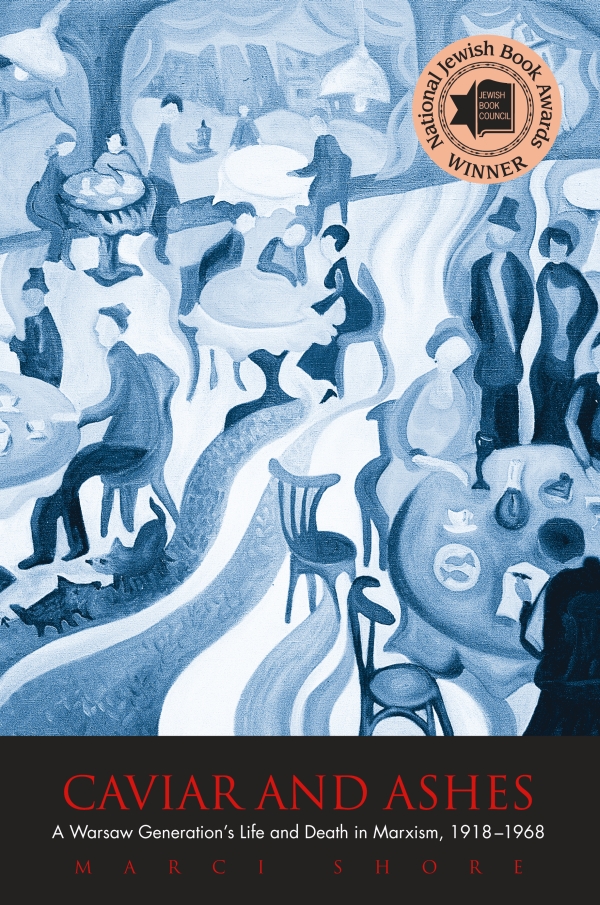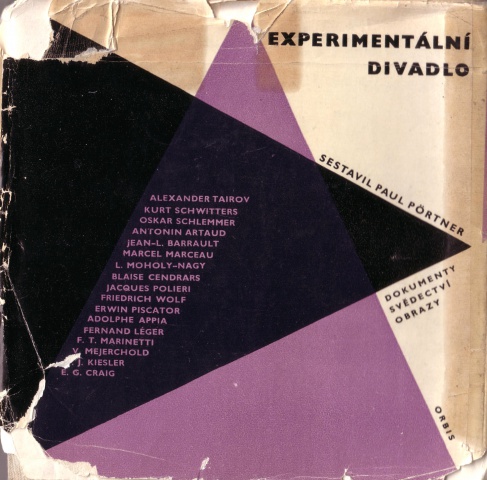Marci Shore: Caviar and Ashes: A Warsaw Generation’s Life and Death in Marxism, 1918-1968 (2006)
Filed under book | Tags: · art, art history, avant-garde, communism, futurism, history of literature, literature, marxism, poland

“‘In the elegant capital city of Warsaw, the editor Mieczyslaw Grydzewski would come with his two dachshunds to a café called Ziemianska.’ Thus begins the history of a generation of Polish literati born at the fin de siècle. They sat in Café Ziemianska and believed that the world moved on what they said there. Caviar and Ashes tells the story of the young avant-gardists of the early 1920s who became the radical Marxists of the late 1920s. They made the choice for Marxism before Stalinism, before socialist realism, before Marxism meant the imposition of Soviet communism in Poland. It ended tragically.
Marci Shore begins with this generation’s coming of age after the First World War and narrates a half-century-long journey through futurist manifestos and proletarian poetry, Stalinist terror and Nazi genocide, a journey from the literary cafés to the cells of prisons and the corridors of power. Using newly available archival materials from Poland and Russia, as well as from Ukraine and Israel, Shore explores what it meant to live Marxism as a European, an East European, and a Jewish intellectual in the twentieth century.”
Publisher Yale University Press, 2006
ISBN 0300110928, 9780300110920
457 pages
Reviews: Irena Grudzińska-Gross (The Polish Review), Robert Blobaum (The American Historical Journal), Matthew Kaminski (The Wall Street Journal).
PDF (updated on 2020-12-2)
Comment (0)Iliazd: Lidantiu faram (1923) [Russian]
Filed under artist publishing, play | Tags: · dada, futurism, poetry, typography, visual poetry, zaum

Lidantiu faram [Le-Dantyu as a Beacon] is a play typed in zaum language by the Georgian-French artist-typographer Iliazd (Ilya Zdanevich). It remains an unsurpassed example of visually fascinating typographical contrivances and was to exert a decisive influence on the typographical component of international dadaist poetry.
“The book is preceded by a table of symbols which indicate how the sounds they stand for, such as a click of the tongue, are to be pronounced. The stressed symbol is given a capital letter, often large and bold, in the middle of the word, while unstressed vowels are written as pronounced, not necessarily as normally spelt.
The plot, in a parodic inversion of Gogol’s short story ‘The Portrait’, investigates the nature of reality in its relation to art. It begins with the Spirit [Zaperedukhyai] muttering a soliloquy over the body of a dead woman. The Spirit’s words do not contain vowels, an omission suggesting firmness. The villain of the piece, the realist painter [peredvizhnik] who is presented as a lisping phoney, paints a lifelike portrait of the dead woman. Then comes an obscure avant-garde artist, Mikhail Ledentu, who represents genuine liberated art and he paints an unlike portrait of the same lady. Both portraits come alive during the play, with Unlike killing Lifelike. The Spirit also dies but the forces of life are resurrected. The play ends with an ensemble superimposed on each other: the harmonious trio of the living is echoed by the dissonant octet of the dead. The forces of death include a Greek chorus of five ugly realism-loving women, usually singing in quintet. They are defined as truperdy (this combines death and decay with scatology) and their individual names are mostly rare Russian folk words with sexual anatomical meanings. The quintets show strong individualisation of each part: one of them speaks in vowels only; another hissing and lisping; another in abrupt and primitive tones adding clicks of her tongue to her words; the other two speak in a coarse and unpleasant idiom.
Le-Dantyu as a Beacon is an astonishing tour-de-force. Every page number, for instance, is created in a different and inventive manner (and there are sixty-one of them), and the variety of typeforms used must surely have entailed ransacking the typecases of several printers.” (from Alan Bartram’s Futurist Typography and the Liberated Text, 2005, altered)
Lidantiu faram (Лидантю фарам; Ledentu le Phare: poème dramatique en zaoum)
Preface by Georges Ribemont-Dessaignes, in French (attached at the end)
Cover by N. Granowsky
Typography by Ilya Zdanevich
Publisher Éditions du 41º, Paris, 1923
61 pages + 8-page prospectus
Commentary: Lewis Blackwell (20th-century Type, 2004: 35), Alan Bartram (Futurist Typography, 2005: 50-69).
PDF (15 MB, via Iowa Digital Library)
PDF (107 MB, added on 2020-12-5, via Kunsthaus Zurich)
Paul Pörtner (ed.): Experimentální divadlo: přehled, dokumenty, kresby, fotografie (1960/1965) [Czech]
Filed under book | Tags: · art history, avant-garde, experimental art, futurism, history of theatre, theatre

A history and documents of the experimental theatre edited in 1960 by the German playwright, novelist and translator.
“Pörtnerova kniha chce ve stručnosti, mnohdy až lapidární zkratkou, seznámit s výsledky nejdůležitějších pokusů, ktoré vznikly z vědomí neomezených možností moderního scénického prostoru a chtějí zbavit divadlo otrocké závislosti na konvenci a stagnaci, vlastní stávajícímu divadlu.
Výsledky pokusů velikých experimentátorů, mezi nimiž nechybí taková jména jako Appia, Craig, Marceau, Piscator, ale i Léger, Moholy-Nagy, Picasso, svítí nadále jako maják do budoucnosti, neboť jen málo impulsů z jejich bohatého odkazu přešlo do praxe současného divadla.
Ačkoli nelze očekávat, že idea ‘totálního divadla’ ožije v celé plnosti jejich představ, zůstává nicméně naděje, že sebevědomí divadla jako svébytného uměleckého druhu zesílí, že experimenty se specificky divadelními prostředky budou vedeny dále, aby se tak z dílčích událostí stala skutečná divadelní událost, ve které spojí experiment formy s novým obsahem.
Kniha může být cenným podnětem v našem soudobém uměnovedném myšlení a má význam i pro historii předválečného divadla, která má právě v této oblasti mnoho neujasněností a bílých míst.” (from the inside flap)
First published as Experiment Theater. Chronik und Dokumente, Arche, Zürich, 1960
Translated by Jan Rak
Publisher Orbis, Prague, 1965
Volume 4 of Monoskop Unlimited Edition series
176 pages
PDF (66 MB, no OCR)
Comment (0)
